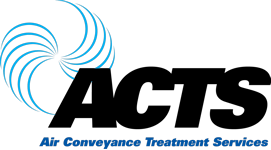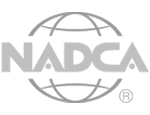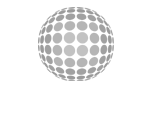 Whether you oversee one office building or you are responsible for a large complex of industrial and technological facilities, you can rest assured that Air Conveyance Treatment Services has the expertise to effectively clean your complete HVAC systems. Our technicians are certified in mechanical hygiene and receive frequent training on the latest industry-leading processes. We have the capabilities to inspect and document the entire cleaning process – before, during and after cleaning – providing you with the information you need to maintain proper building and operations records.
Whether you oversee one office building or you are responsible for a large complex of industrial and technological facilities, you can rest assured that Air Conveyance Treatment Services has the expertise to effectively clean your complete HVAC systems. Our technicians are certified in mechanical hygiene and receive frequent training on the latest industry-leading processes. We have the capabilities to inspect and document the entire cleaning process – before, during and after cleaning – providing you with the information you need to maintain proper building and operations records.
Why clean HVAC systems? Is duct cleaning worthwhile?
According to the U.S. Department of Energy, 25 to 40 percent of the energy used for heating or cooling is wasted. Contaminants in the heating and cooling system cause a system to work harder and can therefore cut its life span. Although filters are used, the HVAC system still gets dirty through normal use. When a system is clean, energy is used more efficiently and costs are reduced. Buildup of HVAC biofilm can greatly diminish HVAC efficiency by reducing air flow and decreasing heat transfer. As a result, fans need to run longer to maintain a desired temperature, and chillers and pumps need to work harder to achieve set temperature points.
Small investments in regular HVAC maintenance will save you time and money on system repairs and extend the life of the equipment. Make sure your facility has a plan (often referred to as a “preventative maintenance plan”) that includesscheduled time for HVAC maintenance at least annually, if not twice a year, between heavy-use seasons. Having a maintenance plan in place—and sticking to it—helps prevent unexpected and costly breakdowns, outages and repairs and also results in better energy efficiency.
“HVAC systems in typical commercial buildings are responsible for more than 40 percent of total energy use. Keeping HVAC systems running properly and at peak efficiency is the first step in managing facility energy use.”
– James Piper, FacilitiesNet article
Recent studies by ASHRAE prove that keeping air handler components clean saves energy dollars and improves other building efficiencies, including dehumidification and comfort. Just cleaning coils results in pressure drops of 14% and increases the thermal efficiency 25 percent in the coils’ ability to transfer energy.
While aging systems are the most suspect, even new systems may require inspection and cleaning. NADCA recommends that systems in new buildings, or in newly renovated buildings, be visibly inspected and cleaned before operating.
ACTS follows NADCA Standards
The ACR 2013, The NADCA (National Air Duct Cleaning Association) Standards for Assessment, Cleaning and Restoration of HVAC Systems, 2013, states the following:
It is recommended that HVAC systems be cleaned when a proper HVAC cleanliness inspection or building history indicates one or more of the following conditions exist:
- The HVAC system is contaminated with an accumulation of particulate
- The HVAC system performance is compromised due to contamination build-up
- The HVAC system has been determined to be a source of unacceptable odors
- The HVAC system is discharging visible dirt or debris into the conditioned space
- The HVAC system has been contaminated as a result of fire, smoke and/or water damage
- The HVAC system has been infested with birds, rodents, insects or their byproducts
- The HVAC system has been determined to be at risk for fire hazard
- The HVAC system has been contaminated with construction debris or dust
- Mold contamination conditions show at least settled spores and trace growth, beyond normal levels for an indoor environment
- Deterioration of fiberglass duct liner, duct board or other porous component
- As part of an HVAC maintenance program as defined in ANSI/ASHRAE/ACCA Standard 180
- As part of the HVAC equipment manufacturer’s recommended maintenance practices
- As part of a proactive energy management program
- As part of a proactive indoor air quality management program
- As a component to achieve LEED Certification
- When a newly installed component or dust has been contaminated with construction and/or other dust and debris.
Note: If there is a question on the need to clean, the NADCA Surface Comparison Test or NADCA Vacuum Test may be performed to assist in determining the need for cleaning. ACTS can help you through the entire process, from inspection to cleaning and re-inspection.
What about Insulated Ductwork?
The North American Insulation Manufacturing Association’s (NAIMA) Air Handling Committee issued the following guidance:
“As always, prevention is the best solution...In some cases, it may be too late for prevention, and system cleaning is deemed necessary. If this is the case, it’s important to understand the cleaning practices that will ensure maintenance of an insulated duct system’s structural and functional integrity. The air distribution system needs to be opened, cleaned, re-closed, and returned to service with its thermal, acoustical, and air-tightness properties intact.
Prior to cleaning, a careful inspection of the entire HVAC system should be made. Inspection should include all equipment located within the airstream: central air handing units, variable air volume units, in-line electric heaters, oils, filters, humidifiers, drain systems and the duct work. When inspecting the duct work, a light film of dust is generally present (and to be expected) on the inside (airstream) surfaces of all kinds of ducts. If, upon ductwork inspection, there is evidence of amplified microbial growth on the surface of the sheet metal or fiberglass lining, the problem cannot be totally corrected until the source of contamination and the conditions that led to the amplified growth are identified and remedied. When both inspecting and cleaning, any and all access should be through existing openings when possible. However, in nearly all cases, it will be necessary to cut through duct walls in order to insert cleaning equipment. Three most commonly used, and frequently effective methods are contact vacuuming, air washing and power brushing,…but in all cases, care must be taken in the selection and application of any cleaning process.”
NADCA goes further in stating:
“The mechanical cleaning methods selected for duct liner or fibrous glass duct board shall not create abrasions, breaks or tears to fibrous glass liner or duct board surfaces…Resurfacing may be considered when thermal acoustic fibrous glass components, including air duct liner or duct board in the HVAC system, are considered friable or exhibit visual signs of abrasion, degradation, or other undesirable condition,…and may be considered when the project work plan requests smoothing fiberglass surfaces to reduce future particulate collections within the HVAC system.”
NADCA further notes:
“When there is evidence of damage, deterioration, delaminating, friable material, such that cleaning or resurfacing cannot restore fibrous glass materials, replacement is recommended.”






